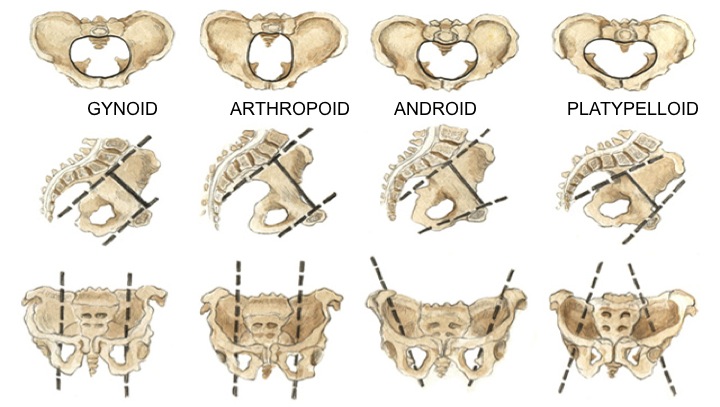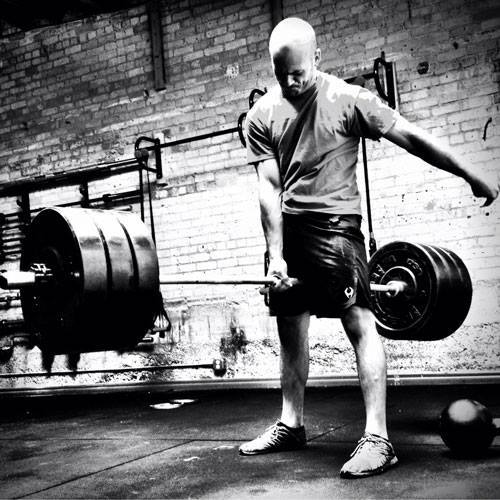Deadlifting: Picking the Right Version for You Is As Important As Absolute Strength
If I told you that you probably weren’t deadlifting properly, most people would agree. Sure, some would say they’re completely bullet proof and have absolutely no flaws, but they are few and far between. I’m not talking about the technical execution of the lift, however.
What if I said you probably weren’t doing the right type of deadlift for you or your capabilities?
Thee’s a lot of different deadlifts you can do: conventional, sumo, modified sumo, Jefferson, 1-arm, Reeves, snatch grip, reverse, backwards reverse, sideways conventional, and backwards sideways, just to name a few. Sure, some of those versions don’t actually exist, but that doesn’t change the fact that there’s a lot of variations of deadlifts, and one or more of them may give you less than desirable results while others may make you pull significantly more weight immediately.
So why is it that some deadlifts work well for some but not for others? Well, you could chalk a lot of it up to anatomy and specific alignment. There’s 4 main types of pelvic structure, as well as different angles of nutation of the sacrum. Additionally there’s different angles of breadth to the pelvis, each of which means there’s different positions where leverage to lift is better than others.
Additional to this is the fact that there’s different angles of the femoral neck as the femur joins into the pelvis. All of this together means that movement is incredibly variable.
The thing about all of these variations is that without an MRI or an X-ray, it’s very difficult to tell what type of pelvis or alignment an individual has, and it’s especially hard to tell how the combination of all features will play out in terms of exercise execution. Add in the hardships of degeneration through aging, old injuries, stressors, and what ever the heck else you want to throw in the mix, and it can be very hard to say with 100% certainty that any one version of the deadlift is best for any one.
Using myself as an example, when I started getting into heavier deadlifts following a history of low back issues, I played with some different variations to see what worked well and what didn’t. My criteria were whether it looked like a complete train wreck on video, whether I felt strong with the lift and the relative effort was within reason, whether there was pain, and if I noticed secondary issues (medial knee pain on wider sumo stance lifts, for instance).
I came to the conclusion that a square stance conventional position with a packed neck worked really well for me, but made some significant gains when I moved from a completely square stance to slightly externally rotating my right foot a few degrees.
[youtuber youtube=’http://www.youtube.com/watch?v=j-MJHtgVa5g’]
Compare this position to one like my friend and co-worker Jon Stewart, who holds a few powerlifting records around here:
[youtuber youtube=’http://www.youtube.com/watch?v=j8fwAKdkAVo’]
Now interestingly, an additional feature I used to determine if my deadlift technique was a good one or not was grip strength. We have a hand grip dynamometer at work, which measures grip strength in kgs of force. What I would do is test my grip before lifting, perform a lift, and then test afterwards. My thought was that if the lift was beneficial it would increase the strength of the entire system pulling the weight, not just the main lifting muscles. This meant that if I had a good lift, the main muscles of the glutes and hamstrings would be doing all the work. If it wasn’t, I would find a compensation pattern to get the job done, which typically would come from the upper back, shoulders and low back.
Since grip strength is correlated to core and shoulder stability, I figured it would be a good way of testing. If the grip strength stayed the same or went up, it was a good variation for me. If it went down, no bueno as they say in France. The lifts where the grip strength went up were the ones where I was able to lift the most weight, had the best feel about the lift, and that produced no pain.
The main reason I chose grip strength was that when I was getting into deadlifting more in the beginning, I noticed I was getting some significant hand cramping. One of the downsides of catching my left thumb in a face mask when I was playing football is now I can give you a thumbs up and point at you simultaneously, and it also completely sucks for gripping stuff.
When I had less than ideal deadlifting form or picked a bad version, I found my grip was weaker and my forearms were stupidly sore afterwards, even if my glutes and hamstrings felt fine.
I didn’t know it at the time, but I was experimenting with something that already existed. A good friend of mine, Dave Dellanave, who can pull 3.5 times his bodyweight in the deadlift, has been championing a concept called “biofeedback,” in which you test your performance in a movement against a known measurement of physiologic aptitude. Essentially, does the version of the lift you’re doing test well against and external known value, or does it not? Dave has a free course available HERE if you want to know more, and if you’re a trainer interested in getting better results for your clients, or if you’re interested in getting better results for yourself, you should check it out.
Additionally, Dave’s come out with an entire e-book on deadlifting and how to utilize biofeedback to determine what your ideal stance and technique should be for the lift, called Off the Floor.
I got a chance to go through this over the weekend, and in one sitting I learned more about deadlifting than at any other time in my training life. I wish I had this resource back when I was first starting out with heavy lifting, as it would have saved me a lot of time, energy, and probably a few chiropractor visits from picking the wrong lifts. I also would have been able to get better results for my clients, which really ticks me off.
Seriously, I’m pissed I didn’t know this stuff sooner.
Dave’s a jerk. He’s sat on this information for a long time, not letting anyone else take advantage of it. Here he was just kind of existing on social media when he could have been writing stuff and sharing information that would have been able to be used by me to better myself. Oh, and others.
I hate Dave. This book made me see why my experimenting on myself was on the right track, but where I went terribly wrong, and also what I should have done differently. It also showcased some variations on technique that I should have known beforehand, including some of the old-time strongman variations and how to utilize them in a commercial setting (where I work), which is incredibly convenient.
What the hell, Dave??!?! I thought we were friends??? And I figured friends would be cool and share stuff with each other. Like how I sent you and Jen hoodies, even though you sent back t-shirts for Lindsay and I. I took a sweet pic in the t-shirts, but you guys haven’t sent me anything to market the hoodies. I figured you would at least show me how you got some crazy strength in your deadlift in exchange of keeping your ass cozy and warm during those long cold Minnesota winters. Sure, you sent me the full book, complete with a doable program, training journal and template for finding my own deadlift technique that will most likely be even more effective than my current one, but you couldn’t have done this like 5 years ago?!?
Screw you Dave. I hope everyone reading this picks up a copy of your new e-book Deadlift Off the Floor, then someone somewhere goes on and beats you in a deadlifting contest. Then it creates a snow ball effect, where everyone who touches a bar can then pull over 600 lbs, world records fall, your systems become commonplace in training centers, and it ushers in a new era of pain-free and accelerated deadlifting which then renders you and your teachings useless as clones and duplicates take over the world of deadlifting.
If you want to get better at deadlifts and hopefully stick it to Dave by eventually beating him at his own game, pick up a copy while you can get it at a discount, for only $49. It even includes an hour interview with Bret Contreras about…….what else……..deadlifting.
===> Get OFF THE FLOOR Now!!<===
****UPDATE: Dave included a bunch of new content, videos, and all sorts of fun deadlifting awesomeness to celebrate the 1 year anniversary release, and even put it on sale for $49 again, which means you can get even more for your dollar. Get your copy while the sale is still on!!!




One Response to Deadlifting: Picking the Right Version for You Is As Important As Absolute Strength